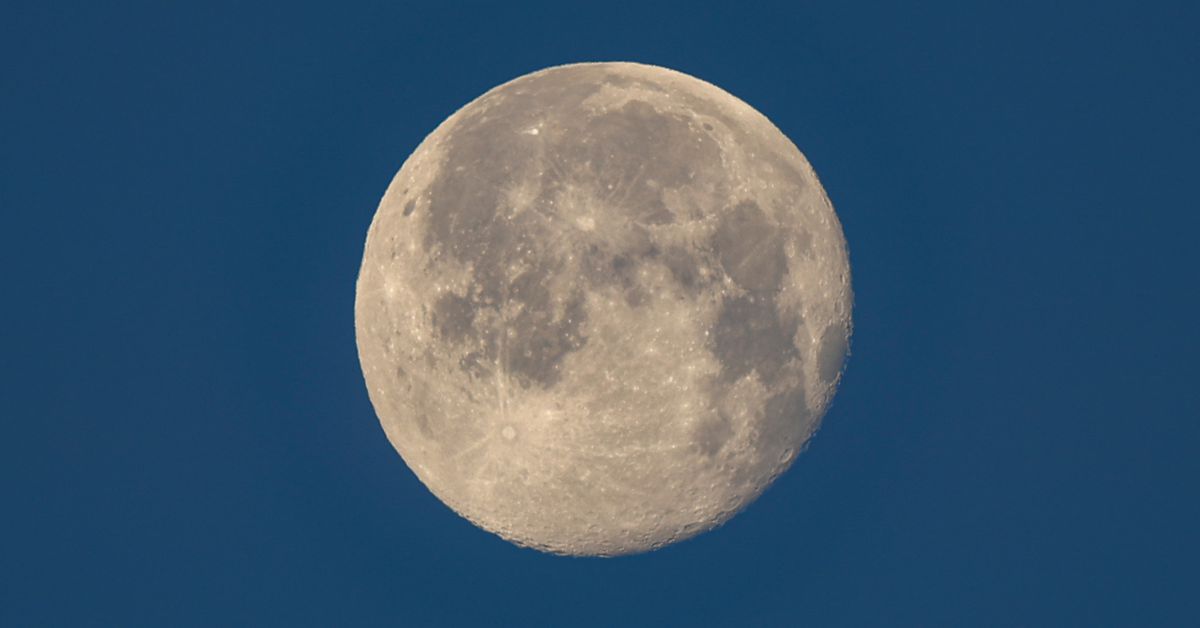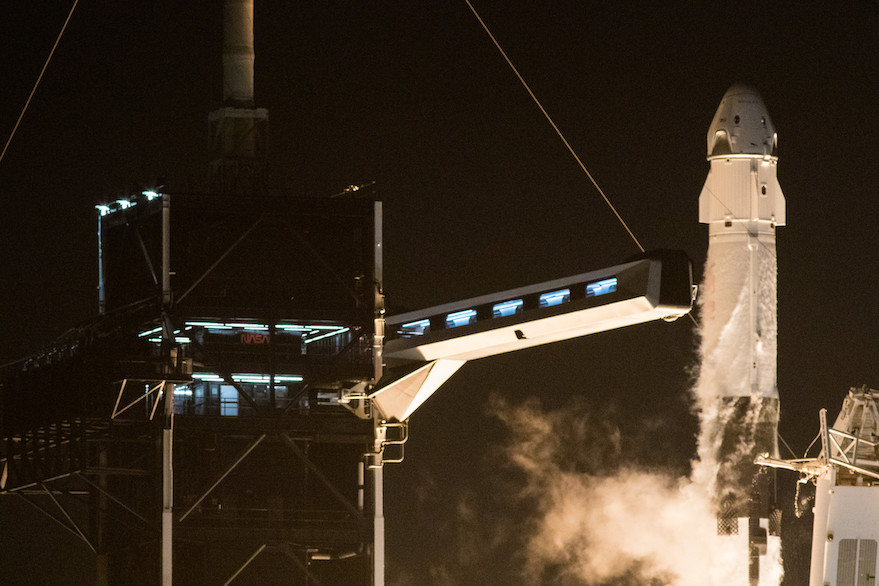
The year 2020 AD did not turn out exactly as we would have liked down on Earth. But in space, it did prove to be momentous.
SpaceX and NASA delivered astronauts to the International Space Station (twice!) aboard the Crew Dragon capsule, Japan and China brought back extraterrestrial rock to Earth and NASA scooped up some space chunks from asteroid Bennu. Excitement for Mars peaked in July, when three missions departed for the red planet. The Mars-bound spacecraft, from NASA, China and the United Arab Emirates, are en route now. They're set to arrive early in 2021.
Last year, to keep all of you in the know, CNET launched the SPACE CALENDAR (all caps for dramatic cosmic effect), covering all the big rocket launches, mesmerizing meteor showers, epic eclipses and even an assortment of scientific milestones. In 2021, we're back at it again. You can find all the key dates for space missions below, with meteor showers and events without a date toward the end of the piece.
Our always-updating Google calendar can be synced with your own calendar so you never miss a thing. That big button below? That's how you add it.
You can also use another calendar with this link, which will allow you to download our calendar file and add it to a provider of your choice, like Outlook.
There are many more rocket launches each year than those listed below, but they're so often subject to change that we've decided to leave them off this big list. The best advice is to always keep an eye on CNET's Science page and sign up for our space and science newsletter if you want to ensure you're getting launch updates from the likes of SpaceX, Rocket Lab and Blue Origin. We'll also endeavor to shift things around on the Google calendar as soon as we have information, so keep your eyes peeled.
***
Are we missing anything? You can email or tweet me with any glaring omissions.
***
[February?] Starship SN9 test
BOOM. SpaceX's Starship SN8 prototype had an eventful landing.
SpaceXRemember the incredible explosion of SpaceX's SN8 prototype in December? SpaceX considers that a success on its way to a fully fledged spacecraft that can get to orbit and -- eventually -- to Mars. In late 2020 or early 2021, Elon Musk's spaceflight company expects to send the next numbered prototype on its way. Its three powerful Raptor engines are attached and it has been wheeled onto the launchpad, so the prototype is likely to fly early in 2021.
The SN9 test has been delayed a number of times and we're trying to stay on top of things. It's looking like an early February launch is possible. We'll keep you updated, just jump over to this article!
[Feb. 9] Hope inserts itself into Mars' orbit
The Hope probe (Al Amal) will circle Mars on a 55 day orbit, analyzing its atmosphere.
MBRSCThe United Arab Emirates' Hope (Al Amal) probe, which was launched in July 2020, will perform a Mars Orbital Insertion (MOI) as it prepares to circle the red planet and produce one of the most complete pictures of its atmosphere ever. A successful MOI would make the UAE the fifth nation to reach Mars, following the US, Russia, China and India.
The MOI is a complex procedure, involving a 30 minute burn that slows Hope from 75,000 miles per hour to just 11,200. At approximately 7:42 a.m. PT on Feb. 9, the bus-length probe will be "at" Mars and will begin to transition to the science phase of the mission. It will, at its closest point, be just 620 miles from Mars' surface.
Want to know more about the journey to Mars for the UAE? Read about it here.
[Feb. 10] Tianwen-1 arrives at Mars
Tianwen-1 on its way to Mars, hoping to make China the third nation to successfully land on the red planet.
Chinese Lunar Exploration ProgramChina's Tianwen-1 ("Questions to Heaven") spacecraft is carrying a Martian orbiter, lander and rover as cargo and will make its own insertion just a day after Hope, according to Chinese news service CCTV. The Chinese mission will not release it's lander or rover immediately to the surface. It's expected to release those vehicles sometime in May.
The rover has a lifespan of around 92 days and Li Zhencai, deputy commander of the project, told CCTV the mission will be completed around "the end of August."
[Feb. 18] NASA's Perseverance rover lands on Mars
NASA's mission trailer shows the Perseverance rover making a dramatic landing on Mars.
NASA JPLPerseverance will touch down on Mars on Thursday, Feb. 18, 2021, at approximately 12:30 p.m. PT (3:30 p.m. ET). It will have to go through the famous Seven Minutes of Terror, slowing down from an extreme speed of around 12,000 miles per hour to a full stop on the surface in just 420 seconds. It's set to be a huge year for Martian robots and specifically, the quest to find signs of ancient life on the red planet. Along with Perseverance, China's Tianwen-1 lander and rover will also be putting Mars dirt under the microscope -- however, it's not expected to touch down until later in the year.
More: NASA launches next Mars rover: Everything you need to know about Perseverance
[March 25] Boeing Starliner OFT-2 launch
The CST-100 Starliner lands back on US soil, airbags full.
NASA/Bill IngallsThe CST-100 Starliner, a cone-shaped spacecraft designed to deliver astronauts to the International Space Station as part of NASA's Commercial Crew Program, has had its fair share of ups and downs. The first Orbital Flight Test in December 2019 (wow, it was that long ago?) experienced an "anomaly" with the spacecraft's clock which meant it didn't reach the ISS as it had intended and, instead, safely landed back in the desert two days later.
Boeing will now perform a second uncrewed orbital flight test to get the Starliner ready to carry crew. If it all goes successfully, it could pave the way for astronauts to be launched within the capsule later in the year. Fingers crossed.
[March 2021] The Large Hadron Collider powers up again
The Large Hadron Collider will recommence operations in 2021.
Peter Macdiarmid, Getty ImagesThe Large Hadron Collider, the highest-energy particle collider on the planet, has been powered down since Dec. 10, 2018. In March, scientists at the European Organization for Nuclear Research (CERN) flick it back on again.
The collider has been instrumental in testing predictions of theories in particle physics, including discovery of the Higgs boson, or the "God particle" (just don't call it that in front of any particle physicists).
Its third observational run or "Run 3" should kick off in 2022, with a period of commissioning and magnet training to get things up to scratch for examining the atomic world in March. It will then be shut down in 2025 and upgraded again, for its fourth run in 2027. I'm putting this in a space calendar, because, physics is everywhere. Let me have this one. It's cool.
[April/May] China's Tianwen-1 rover lands on Mars
An artist's impression of the three spacecraft China will send to Mars in the coming weeks.
Nature AstronomyTianwen-1, China's triple threat mission to Mars, left Earth in July and is scheduled to insert itself into Mars orbit in February. However, the Chinese space program will not attempt a touchdown for a few months, with most estimates suggesting late April or early May for the historic event.
China is going big here -- an orbiter will continue to circle the red planet, and two spacecraft, a lander and a rover, will be steered to the surface. Mars is typically a very mean-spirited planet: It kills around half of all spacecraft that try to land there, so it's a huge and daring mission for China's space agency. It will be able to build on a strong heritage of moon exploration however, with its Chang'e probes achieving incredible feats of space exploration in the last three years.
More: China's daring Tianwen-1 mission to Mars: Everything you need to know
[May 26] Total Lunar Eclipse of the Flower Moon
The fantastically named "super blood wolf moon" of Jan. 20 and 21 was a stunner combining a total lunar eclipse (blood) with January timing (wolf) and a particularly large appearance due to being closer to the Earth (super).
Richard Bell/Kalamazoo Astronomical SocietyWhen the Earth's shadow covers the moon, you get a lunar eclipse. When the entire moon is shadowed, that's a total lunar eclipse. And when there's a full moon in May, it's known as a "Flower Moon." That's how you get a total lunar eclipse of the flower moon... and that's the first big celestial event of 2021. We have a handy guide for viewing eclipses here. We'll provide a bigger update as it gets closer to May.
[June 10] Ring of Fire eclipse
Millions of people across eastern Asia and the western US had a great view of the annular eclipse in 2020.
James Martin/CNETThe Johnny Cash eclipse, as it's affectionately known by nobody except myself, will occur over parts of the Northern Hemisphere on June 10. A ring of fire eclipse occurs when the moon only partially blocks sunlight, leaving a dazzling ring of fire in the sky. The most recent eclipse (an "annular" eclipse, in scientific parlance) occurred in 2020 and it was spectacular. The best places to watch will be across Russia, Canada and Greenland, but there will be plenty of livestreams and places to watch this one, we assume. We'll bring you all the details as it gets closer.
[June] Boeing Crewed Flight Test
The first crewed Starliner mission could occur as early as June.
BoeingProvided everything works out exactly as hoped in March, the first crewed test flight of the Starliner could head to the International Space Station in June. Similar to SpaceX's Demo-2 mission in 2020, this would be the final check for Boeing's spacecraft before it becomes operational. A big achievement, should it get there.
[July 22] NASA launches DART mission to crash into an asteroid
NASA's mission to crash into an asteroid will say "armageddon outta here" on July 22 as it heads toward space rock 68503 Didymos. The rock also has a smaller twin, known as Dimorphos, which orbits it as its personal moon. The "Double Asteroid Redirection Test" will crash into this smaller asteroid (which is about as big as Egypt's Great Pyramid), and then another mission, led by the European Space Agency for launch in 2024, will study the impact crater and how it changed Dimorphos' orbit and properties.
If it works, NASA thinks the spacecraft could shift the orbit of Dimorphos by around half a millimeter per second. It doesn't seem like a lot, but over time, that could dramatically alter its orbital period.
[Oct. 2] BepiColombo flys past Mercury
BepiColombo will release an orbiter to zip around Mercury in 2025.
CNETBepiColombo, a joint mission between the ESA and Japan Aerospace Exploration Agency (JAXA), had a pretty big 2020. It was called into action as it performed a flyby of Venus to check for signs of life in the upper atmosphere. In 2021, it performs its first flyby of its intended destination -- the planet Mercury. It will be the first in a series of six flybys and culminate in the release of an orbiting craft that will monitor Mercury from 2025.
[Oct. 16] NASA's Lucy launches on asteroid hunt
NASA's Lucy will explore six asteroids over the coming decade.
NASAOne of the most ambitious missions on NASA's slate is known as Lucy, which will attempt to visit eight asteroids over the next decade. It will be the first mission to study the Trojans, a group of asteroids that trail and lead Jupiter in orbit around the sun.
The mission is named after the fossilized remains of an ancestral human discovered in Ethiopia in 1974, which rewrote the history books on human evolution. NASA's Lucy might end up rewriting the history of the solar system. The Trojans likely harbor clues to the origin of our solar system and operate as time capsules, allowing scientists to understand the environment of the solar system's earliest eons.
[Oct. 31] NASA's James Webb Telescope launches
NASA engineer Ernie Wright prepares the first six flight-ready primary mirror segments of the James Webb Space Telescope at NASA's Marshall Space Flight Center.
NASA/MSFC/David HigginbothamA particularly spooky launch date for NASA's long-delayed next- generation space telescope. The planned successor to NASA's workhorse Hubble, James Webb is a major upgrade to our capabilities in studying the early universe. Granted things go well, it should be able to see some of the earliest galaxies that ever formed.
But it has been a struggle for the telescope to get into space. It's now coming up to its 25th birthday and it hasn't even got off the ground -- with the pandemic setting it back even further. Granted this launch date holds, it will be a big (and spooky) day for NASA. Another fingers crossed mission.
[Dec. 4] Darkness descends on Antarctica
The only total eclipse of 2021 will occur over Antarctica.
Jonathan Ordonez/GettyIf you're some of the scattered wildlife that spends time in Antarctica (or perhaps some lucky researchers), then you'll be able to catch the only total solar eclipse of 2021, when the moon blocks light from the sun over the icy continent.
The next total solar eclipse after that won't be until 2023 and it will only be visible in parts of Southeast Asia and Australia. The US will experience a total solar eclipse in 2024.
Artemis I is coming (perhaps)
"Earth blue, rocket red and lunar silver" is how NASA describes the colors used in the logo for the Artemis program. The logo pulls from the history of the Apollo program.
NASANASA's plan to return humans to the moon in 2024 involves a series of missions under the Artemis banner. The very first Artemis mission, Artemis I, is scheduled to launch in 2021. The missions will use a huge, new rocket known as the Space Launch System, or SLS, which will carry an uncrewed spacecraft known as Orion to lunar orbit.
NASA has discussed this one for November, but there's every chance it will slip later than that and potentially to 2022. If the mission succeeds, we might see Artemis II -- with a human crew -- launch in 2023.
Will Chandrayaan-3 launch in 2021?
India launched Chandrayaan-2 to the moon in 2019, but a software glitch caused a "hard landing."
ISROIn 2019, the Indian space agency, ISRO, attempted to make history by becoming the fourth nation to soft-land on the surface of the moon. Unfortunately, things went awry. A software glitch caused the spacecraft, Chandrayaan-2, to careen into the moon's surface. The mission was designed to land at the lunar south pole, which would have been a historic first. Almost as soon as Chandrayaan-2's unfortunate ending came to light, India announced it would try again,with Chandrayaan-3.
The mission was slated to launch in 2020, but pandemic. Will it launch in 2021? That's what ISRO is shooting for.
Steve Brown grabbed this magnificent time-lapse of star trails during the Perseid meteor shower.
Steve BrownThroughout the year, CNET will have bespoke coverage of when and how to catch each meteor shower listed below. If you bookmark this page, you can just return here at your leisure -- or, remember to check CNET for the latest on how to spot meteors!
- Quadrantids Dec. 27, 2020 - Jan. 10, 2021.
Peak night: Jan. 2
Want to watch the Quadrantids meteor shower? Read about that here.
- Lyrids April 16 - April 30.
Peak night: April 21 - Eta Aquariids April 19 - May 28.
Peak night: May 5 - Perseids July 17 - Aug. 26.
Peak night: Aug. 13 - Draconids Oct. 6 - Oct. 10.
Peak night: Oct. 7 - Orionids Oct. 2 - Nov. 7.
Peak night: Oct. 20 - Leonids Nov. 6 - Nov. 30.
Peak night: Nov. 16 - Geminids Dec. 4 - Dec. 17.
Peak night: Dec. 13 - Ursids Dec. 17 - Dec. 26.
Peak night: Dec. 21
Read more: How to see the year's best meteor showers: Everything you need to know
This page is constantly updated.
Article From & Read More ( Space calendar 2021: Mars landings, SpaceX Starship tests, NASA launches and more - CNET )https://ift.tt/3ctPiib
Science














